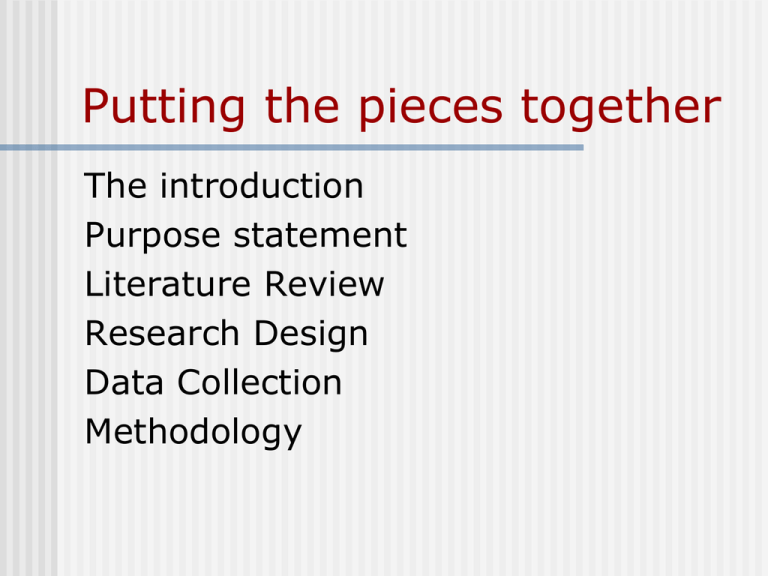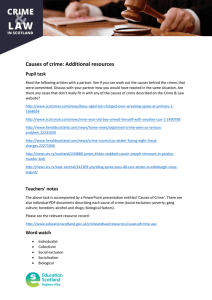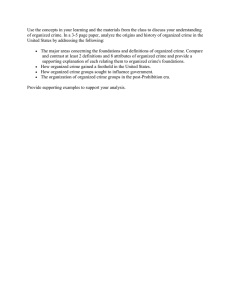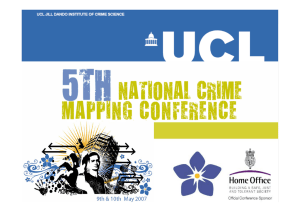Chapter 4 Research Design
advertisement

Putting the pieces together The introduction Purpose statement Literature Review Research Design Data Collection Methodology Introduction/Purpose • The introduction & Purpose statement are critical • Some readers might only read that part (lazy professors; editor; grants) • You better clearly identify your purpose and its importance on the first page. Three Purposes of Research 1. Exploration 2. Description 3. Explanation Identify Units of Analysis What or whom to study: • Individuals • Groups • Organizations • Institutions • Social artifacts Units of Analysis and Faulty Reasoning • Ecological fallacy – assuming something learned about an ecological unit says something about the individuals in the unit. • Reductionism – Reducing something to a simple explanation when in reality it is complex. Identify Time Dimension • Cross-Sectional Studies • Longitudinal Studies Trend Cohort Panel How to Design a Research Project 1. Define the purpose of your project. 2. Specify exact meanings for the concepts you want to study. 3. Choose a research method. 4. Decide how to measure the results. How to Design a Research Project 5. 6. 7. 8. 9. Decide whom or what to study. Collect empirical data. Process the data. Analyze the data. Report your findings. Elements of a Research Proposal • • • • Problem or objective Literature review Subjects for study Measurements Elements of a Research Proposal • • • • Data-collection methods Analysis Schedule Budget (maybe) Why these need to be clear? • To get your prospectus approved • To get funding (grants) • To get approval from IRB So you are still clueless Look to the literature Find Empirical Research Examples and Map them Qualitative Quant. Other Mixed Focus Groups Survey Q-Methodology Triangulation Interviews Random samples Advocacy Research Sequential Ethnography Statistics Content Analysis Concurrent Ethnomethodology Misc Secondary Data analysis Remember • You are writing developing two research designs • 1 broader one for your thesis • 1 narrower one for your paper • They are obviously related but not interchangeable. Advice Be as clear and specific as possible • What is “crime policy”? • What is “assessment”? • What is “privacy”? • What is “identity”? • What do you mean by “immigration” (legal, illegal, both)? Advice In the research design/methodology section, use the lingo but define the lingo. Case study, ethnography, indepth interviews (what does that mean?); focus group (elaborate). Include a justification section for your design that includes references. Drafting and redrafting • Moving from first to final draft is a multistage process that sees you working systematically through the development of: logic and argument coherence and consistency fluency and readability and finally, copy editing APSA Citation Style Erskine, Hazel. 1974. “The Polls: Fear of Violence and Crime.” Public Opinion Quarterly 38 (1): 131-15. Ferraro, Kenneth and Randy LaGrange. 1987. “The Measurement of Fear of Crime.” Sociological Inquiry 57 (1): 70-101. Garofalo, James. 1981. “The Fear of crime: Causes and Consequence.” Journal of Criminal Law and Criminology 82 (2): 839-857. Warr, Mark. 1990. “Dangerous Situations: Social Context and Fear of Victimization.” Social Forces 68, 3: 891-907. Example: Pape (2003)











